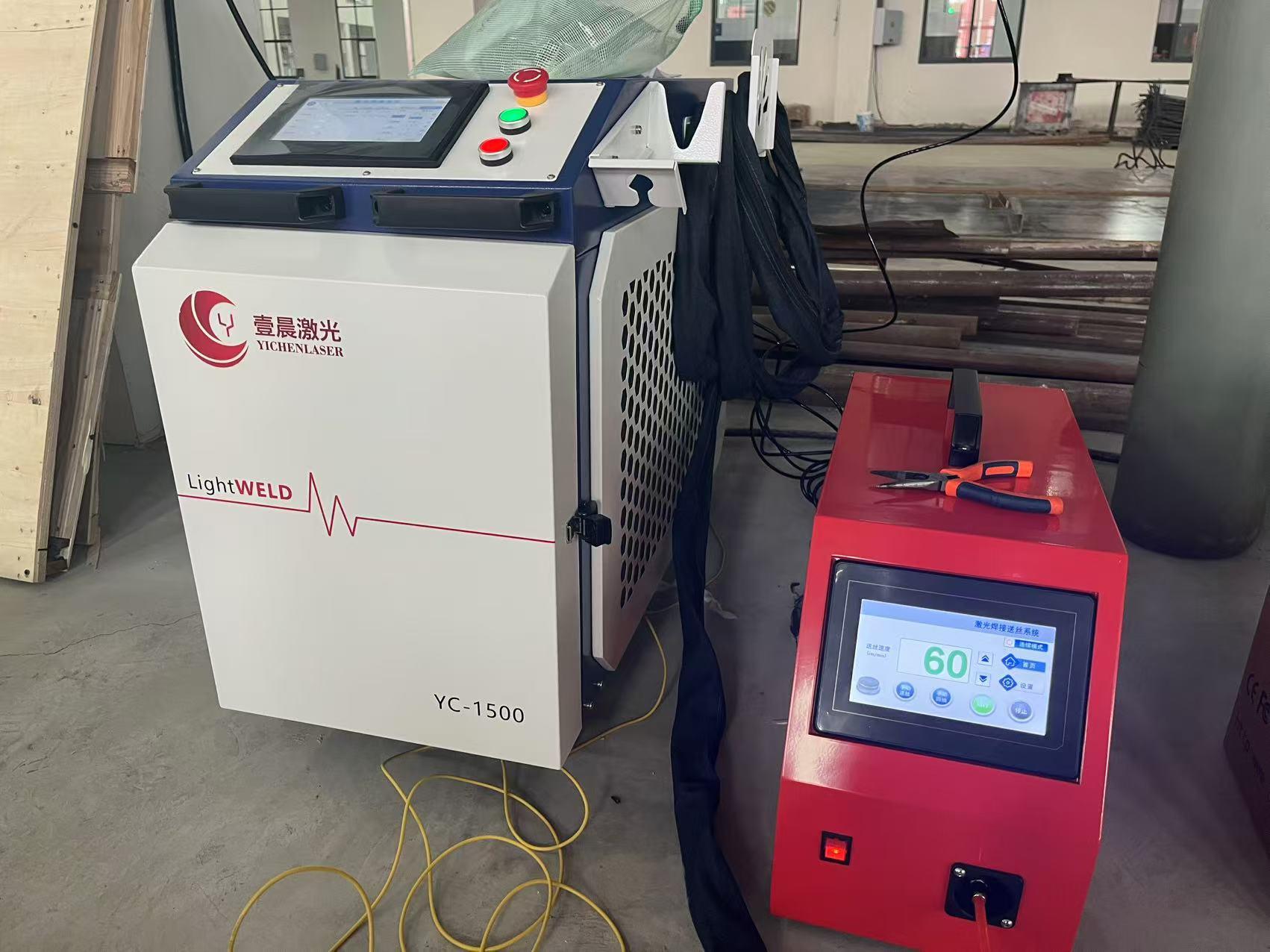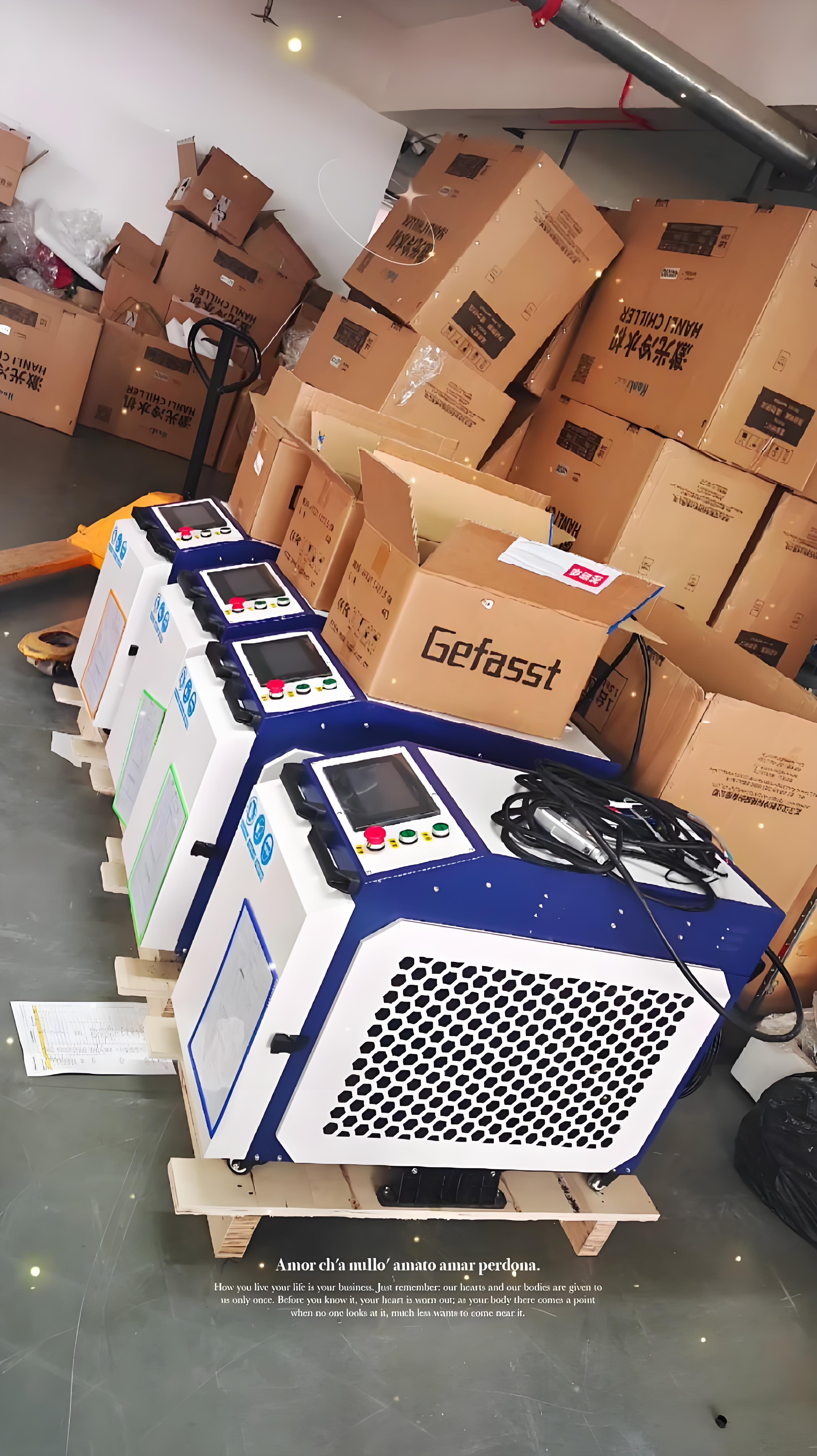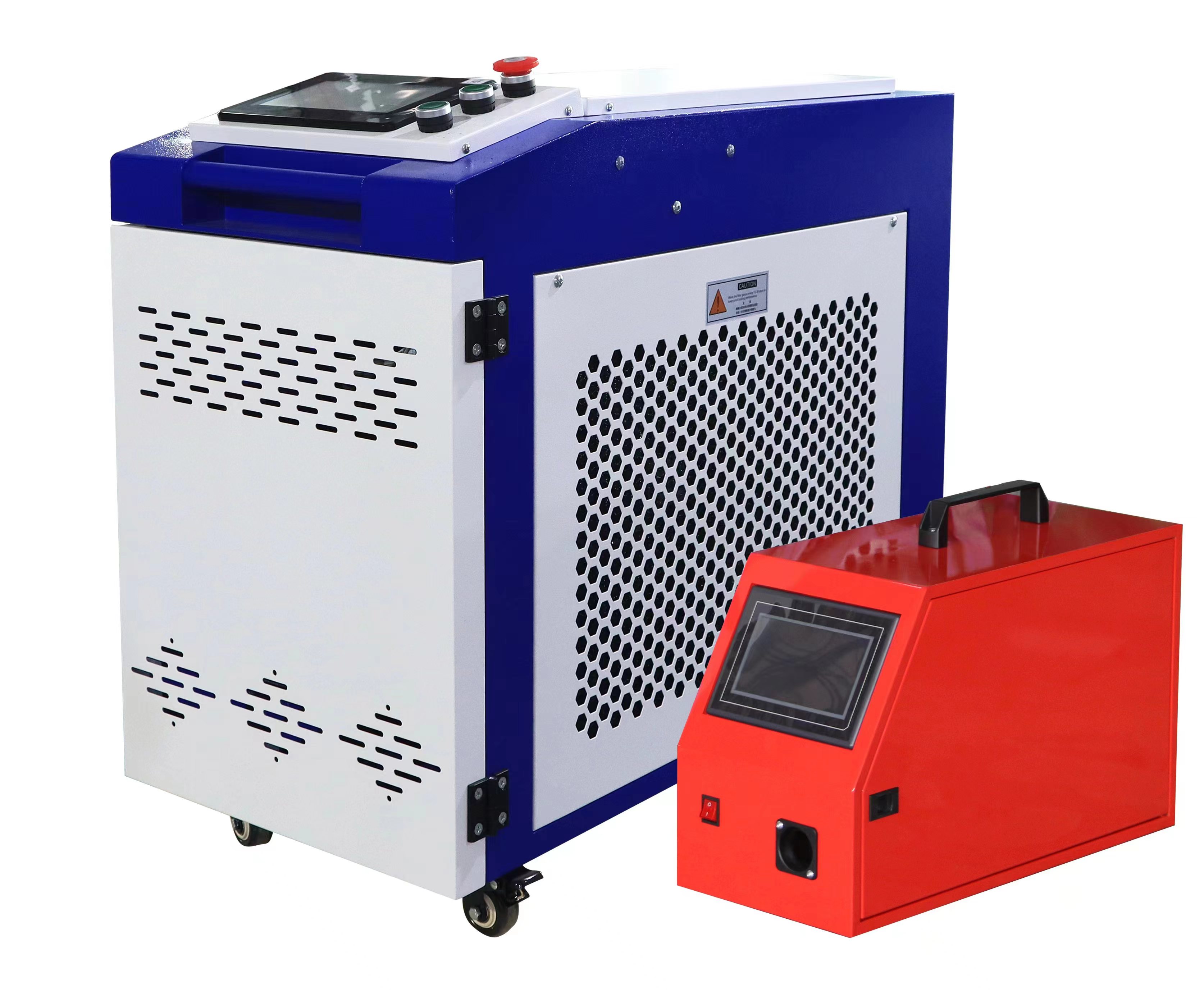As someone who’s been immersed in the field of metal surface treatment for years, I understand the concerns many have when considering laser rust removal: will it harm the surface coating? After all, coatings are not just protective barriers for materials; they often play a critical role in a product’s aesthetics and functionality. In this article, I’ll dive into the principles of laser rust removal, share practical insights based on my experience, and address whether it poses a risk to surface coatings, helping you make sense of this technology.

The Principle of Laser Rust Removal: The Art of Precise “Stripping”
To determine whether laser rust removal can damage coatings, we first need to understand how it works. In simple terms, laser rust removal uses a high-energy laser beam to irradiate the surface of a material, instantly vaporizing or stripping away rust, oil, or other contaminants. It’s like “erasing dirt with light”—sounds futuristic, but it’s remarkably precise.
The key to laser rust removal lies in selective ablation. By fine-tuning laser parameters such as wavelength, pulse duration, and energy density, the process can target specific substances (like rust) while minimizing damage to the base material or coating. This precision makes laser rust removal a go-to choice in industries like aerospace, automotive manufacturing, and artifact restoration, where accuracy is paramount.
That said, laser rust removal isn’t a magic bullet. Improper operation or incorrect parameter settings can indeed damage surface coatings. Below, I’ll break down the key factors that influence this outcome.
How Does Laser Rust Removal Affect Coatings?
1. The Type of Coating Determines the Risk of Damage
Coatings come in many forms—paint, powder coatings, electroplated layers, or complex composite coatings—and their material composition, thickness, and adhesion properties vary widely, affecting how they respond to laser treatment.
Paint Coatings: Paint is often sensitive to lasers, especially darker colors (like black or deep blue) that absorb more laser energy. If the laser’s energy is too high or the exposure time too long, paint coatings may experience ablation, discoloration, or peeling.
Powder Coatings: These are typically thicker and more heat-resistant, but high-energy lasers can still cause slight burn marks or changes in gloss.
Electroplated Layers: Due to their metallic nature, electroplated coatings react differently to lasers. Improper wavelength selection may lead to localized melting or discoloration.
Composite Coatings: Coatings containing ceramics or polymers may only react to certain laser wavelengths, potentially causing delamination or localized damage.
My Experience: In practice, I’ve found that tailoring laser parameters to the coating type—such as lowering energy density or using short-pulse lasers—can significantly protect most coatings. For instance, I once worked on a batch of automotive parts with a thin paint layer. By carefully adjusting the laser wavelength and scanning speed, we removed rust without noticeably damaging the coating.

2. Laser Parameters Are Critical
The effectiveness of laser rust removal hinges on parameter settings. Here are the key parameters that impact coating safety:
Laser Power: Higher power means greater heat input, increasing the risk of coating damage. Low-power lasers (50W–200W) are generally safer for coated surfaces.
Pulse Duration: Short-pulse lasers (nanosecond or picosecond range) vaporize rust quickly, reducing heat transfer to the coating and offering better protection.
Wavelength Selection: Different wavelengths are absorbed differently by materials. For example, a 1064nm infrared laser is effective for rust but may also be absorbed by certain organic coatings, requiring careful adjustment.
Scanning Speed: Slow scanning speeds can cause heat buildup, increasing the risk of coating damage, while overly fast speeds may leave rust behind.
My Tip: Always conduct a small-scale test before full-scale operation to find the optimal parameter combination for the workpiece and coating. I typically test a small area, check for discoloration or peeling, and adjust accordingly.
3. Operator Experience Matters
No matter how advanced the equipment, laser rust removal depends heavily on the operator’s skill. I’ve seen inexperienced operators use high-power lasers on coated steel, resulting in widespread coating damage and scrapped parts.
My Experience: A skilled operator needs to understand the equipment, the workpiece material, and how to adapt to real-time conditions. For example, when cleaning coated artifacts, I use low-power lasers with repeated light sweeps, constantly monitoring the coating’s condition to ensure no harm is done.
How to Prevent Laser Rust Removal from Damaging Coatings
To make it easier to understand how to protect coatings, I’ve compiled a table of key operational guidelines:
| Operational Focus | Recommended Practice | Precautions | Applicable Scenarios |
|---|---|---|---|
| Laser Power Selection | Start with low power (50W–200W) and adjust based on rust removal results | Avoid high power to prevent thermal damage | Thin coatings or sensitive materials |
| Pulse Duration Adjustment | Use short-pulse lasers (nanosecond or picosecond) to minimize heat transfer | Long pulses may overheat coatings | Artifact restoration, precision parts |
| Wavelength Matching | Select wavelength based on rust and coating absorption properties (e.g., 1064nm infrared) | Test wavelength impact on coating | Metal substrates or composite coatings |
| Scanning Speed Control | Maintain moderate to fast scanning speed to avoid heat buildup | Slow speeds may cause coating ablation | Large-scale rust removal |
| Small-Scale Testing | Conduct a trial in a non-critical area to observe coating response | Ensure the test area is representative | All coated workpieces |
My Trick: For complex workpieces, I sometimes apply a protective film or temporary coating (like peelable adhesive) over sensitive areas. After laser rust removal, the film is removed, preserving the underlying coating while ensuring effective rust removal.
Real-World Case Studies
To give you a clearer picture of how laser rust removal affects coatings, here are two real-world examples from my work:
Case Study 1: Automotive Parts Rust Removal
I once worked with an automotive parts manufacturer tasked with removing rust from steel components coated with a thin anti-corrosion paint. The client emphasized that the coating had to remain intact to avoid costly reapplication. We used a 100W pulsed fiber laser with a 1064nm wavelength, a 100-nanosecond pulse duration, and a scanning speed of 2000mm/s. After a small-scale test confirmed minimal coating impact, we processed the entire batch. The rust was completely removed, with only slight gloss changes in the paint and no functional damage. The client was thrilled.

Case Study 2: Artifact Surface Cleaning
Another project involved removing rust from metal components of a historic building, which had a centuries-old lacquer coating. Preservation standards were stringent. We used a 50W ultra-short-pulse laser with slow scanning and multiple light passes, taking three days to complete the job. The rust was removed cleanly, and the lacquer coating remained virtually untouched, preserving its original color. This experience underscored the unmatched precision of laser rust removal in artifact restoration.
Pros and Cons of Laser Rust Removal
So, what are the advantages of laser rust removal, and can it completely avoid coating damage? Let’s break it down.
Advantages
High Precision: Lasers can target specific areas, theoretically removing rust without affecting coatings.
Eco-Friendly: Unlike chemical rust removal, laser cleaning produces no chemical residue, making it ideal for environmentally sensitive applications.
Versatile Applications: From metals to stone, from industrial parts to artifacts, laser rust removal is highly adaptable.
High Efficiency: Compared to manual sanding or abrasive blasting, laser rust removal is faster and more consistent.
Limitations
High Equipment Costs: Laser rust removal machines are expensive, and maintenance costs can add up, which may deter smaller businesses.
Operator Skill Required: Professional training is essential to avoid damaging workpieces.
Challenges with Certain Coatings: Ultra-thin or highly absorbent coatings may still be at risk of damage.
My Take Ven: Laser rust removal offers clear advantages, but it’s not a one-size-fits-all solution. Success with coated surfaces depends on equipment selection, parameter optimization, and operator experience.

How to Choose the Right Laser Rust Removal Equipment
If you’re considering adopting laser rust removal, here are some practical tips:
Define Your Needs: Choose the appropriate laser type (fiber laser, CO2 laser, etc.) and power based on the workpiece material, coating type, and rust removal requirements.
Focus on Brand Reputation: Opt for well-known brands with reliable technical support and after-sales service, such as TRUMPF from Germany or reputable domestic manufacturers.
Test Before Buying: Request sample tests from suppliers to ensure the equipment suits your specific application.
Training and Support: Ensure operators receive professional training to master equipment operation and parameter adjustments.
My Experience: After testing various laser rust removal machines, I’ve found that 200W fiber lasers offer the best balance of efficiency and coating safety for most industrial applications.
Conclusion: Balancing Technology and Expertise
So, will laser rust removal damage surface coatings? The answer is: not necessarily, but it requires proper operation. With the right parameter settings, skilled operation, and appropriate equipment, laser rust removal can effectively clean rust while preserving coatings. Whether you’re working on industrial components or delicate artifacts, mastering the technical nuances makes laser rust removal a powerful tool.
I hope this article clarifies your concerns. If you have specific scenarios or questions, feel free to share them, and I’ll do my best to provide practical insights!






